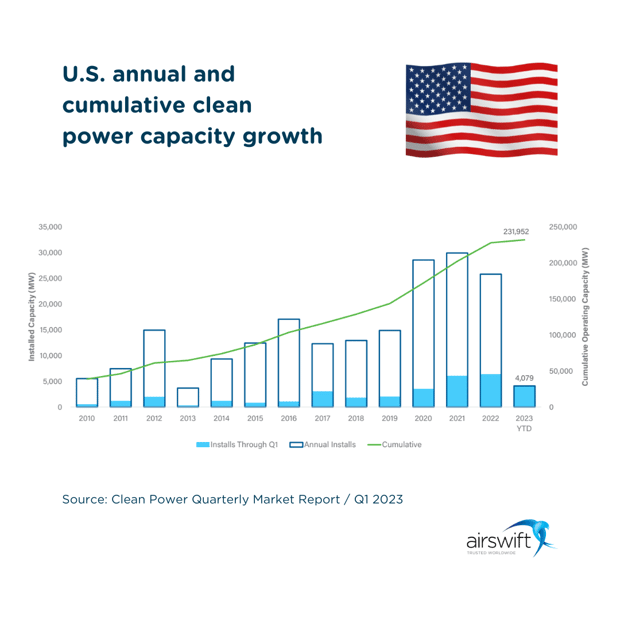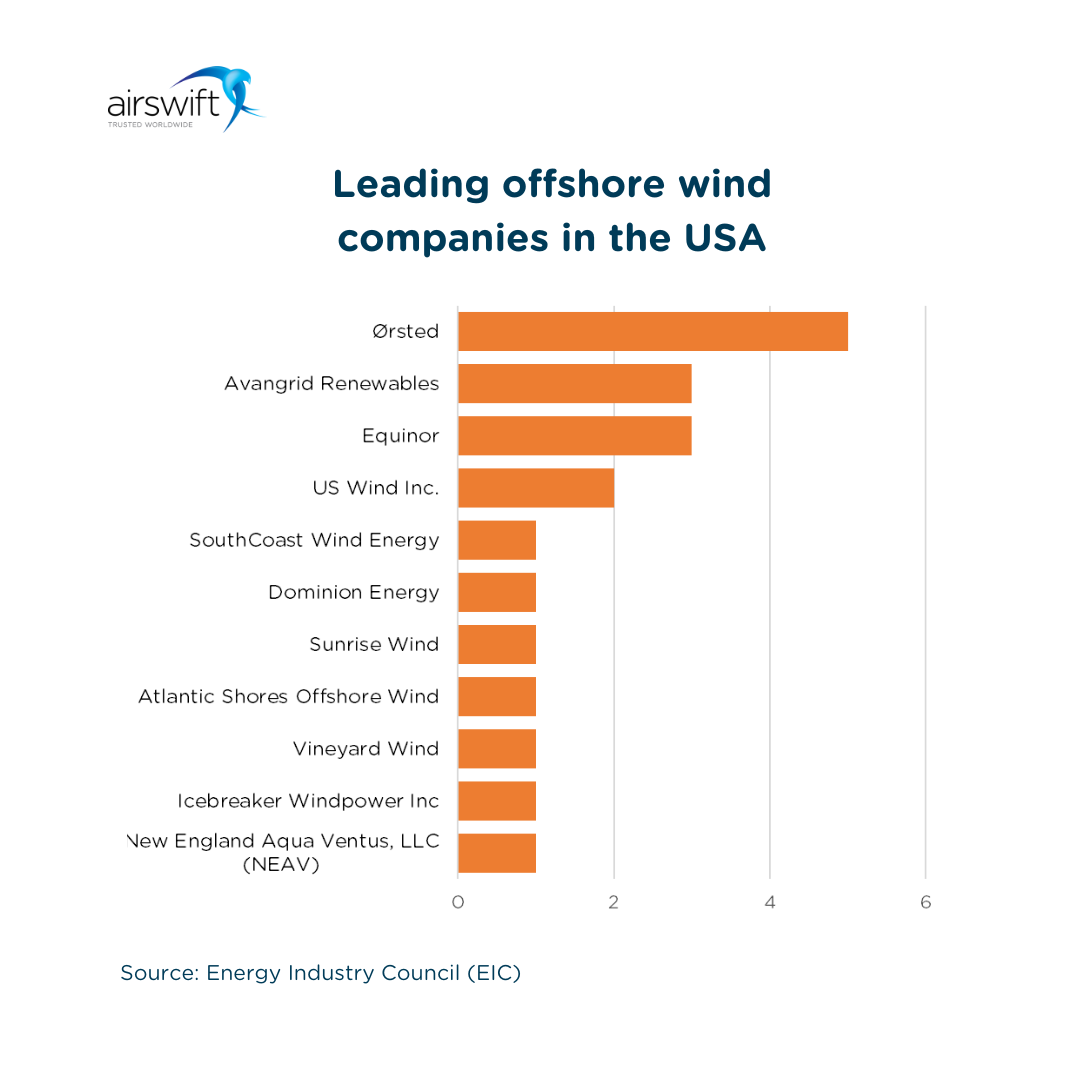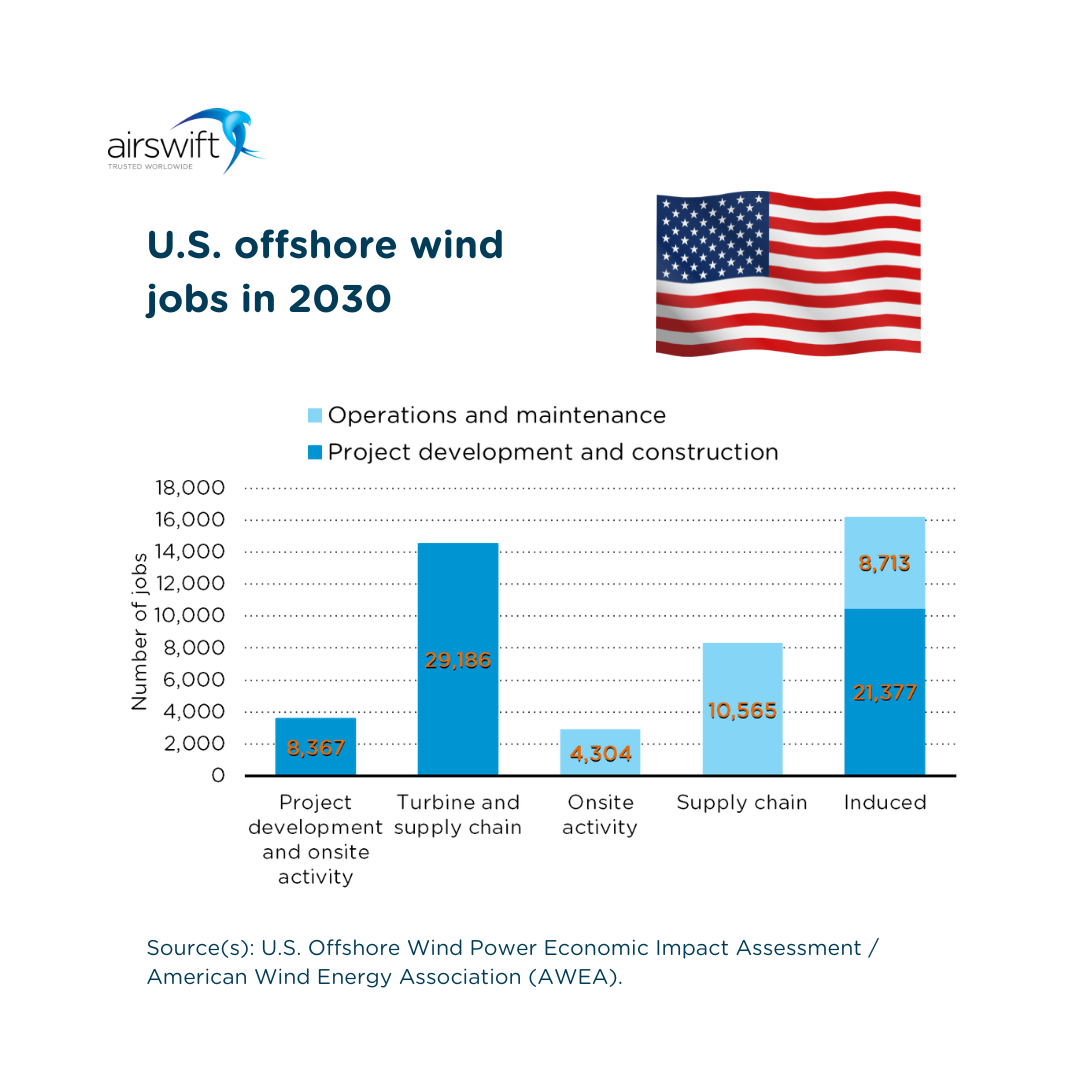
By
Nana Terra
May 30, 2023
Updated
November 20, 2024
Source: Cavan-Images/Shutterstock
With its vast coastline and strong winds, the United States has huge potential for offshore wind energy and is determined to lead a clean energy revolution, unlocking 83,000 jobs in the sector.
The country set an ambitious goal of generating 30 GW of offshore wind energy by 2030, enough to power more than 10 million homes for a year, providing a significant boost to the industry.
However, currently, the region has about 42 MW of capacity and only two operational offshore commercial wind farms — the Block Island Wind Farm off the coast of Rhode Island and the Coastal Virginia Offshore Wind (CVOW) project off the coast of Virginia.
So how will this transformation take place despite slow competition within the industry? Now that’s all starting to change. Want to know everything about the current state of the industry, the leading companies, projects, challenges, and opportunities? Read the full article and get ready for the market!
Offshore wind challenges in the USA
One of the biggest challenges facing offshore wind development in the USA is the high upfront costs associated with building the infrastructure necessary to support it.
The cost of offshore wind turbines and components is higher than that of onshore wind turbines, and the additional costs of building and maintaining offshore infrastructure can add up quickly. A domestic supply chain is critical for the growth of a sustainable, equitable offshore industry in the United States.
Another challenge is the regulatory environment. The U.S. government has jurisdiction over the outer continental shelf, where most offshore wind projects are planned, and the process for obtaining permits can be lengthy and complicated.
Additionally, state regulations and policies vary widely, with some states offering more incentives and support for offshore wind than others.
Opportunities to the offshore wind in the USA
As approximately 80% of the U.S. population lives within 200 miles of the coast, offshore wind is an excellent resource, being very well located. The potential benefits of offshore wind, including its reliability and lower transmission costs, make it a worthwhile investment in the long run.
Despite the referred challenges, there are also many exciting opportunities for the growth of offshore wind in the USA. The growth of the industry in Europe has led to a decrease in the cost of wind turbines and components, which could make offshore wind more competitive in the U.S. market.
The U.S. now has a total offshore wind project pipeline of over 14,000 MW in federal lease areas issued to date. In addition, two offshore wind demonstration projects are planned for development in state waters off Ohio and Maine.
While there are certainly challenges to overcome, the opportunities for growth and the benefits of offshore wind make it a promising option for the future.
Key facts
- States have established nearly 74,000 MW of offshore wind procurement targets to date.
- Developers plan to bring over 11,000 MW of offshore wind online by 2026 by developing 13 offshore wind projects.
- Reaching 30 GW of U.S. offshore wind by 2030 will create 83,000 new American offshore wind jobs.
Clean power installations fell in Q1 2023
According to the Clean Power Quarterly Market Report, in the first quarter of 2023, the industry installed 4,079 MW of utility-scale clean power capacity, enough to power nearly 904,000 American homes. First-quarter installations fell below recent levels, down 36% compared to the first quarter of 2022.
This is the lowest first quarter the industry has experienced since 2020. All three technologies experienced significant declines compared to the first quarter of 2022. Wind installations decreased by 50%, battery storage by 32%, and solar by 23%. First-quarter installs were low in part due to the challenges that continue to delay clean power project timelines.

Clean projects in the pipeline
Despite a fall in quarterly installations, the clean projects pipeline continues to grow. The 138,808 MW in the pipeline represents an 11% increase from Q1 2022 and a 62% increase from Q1 2021.
Solar continues to be the leading technology in the pipeline, accounting for 59% of all clean power capacity in development. Land-based wind accounts for 15% of the pipeline, battery storage represents 14%, and offshore wind claims the remaining 13%.
With numerous states setting offshore wind targets, the technology now accounts for a significant portion of several states. Based on the state of power delivery, New York is leading the nation with 4,230 MW in development, followed by New Jersey with 3,758 MW. Massachusetts is in third with 3,242 MW, followed by Virginia with 2,587 MW.
.png?width=1080&height=1080&name=Projects%20in%20pipeline%20(map).png)
Is the offshore wind capacity in the project pipeline enough to reach the target?
There are 20 offshore wind projects slated for the next 5 years with a total value of $60bn. Massachusetts ($16bn), Maryland ($12bn), Virginia ($10bn), New York (9bn), and New Jersey ($7bn) are the states spending the most over the next years.
The offshore wind energy capacity in the project pipeline is sufficient to reach the target of 30 GW by 2030. Eleven states already have more than that amount in their combined project pipeline, according to the U.S. Department of Energy.
Some of the leading offshore wind companies in the USA pipeline include Ørsted (5 projects), Avangrid Renewables (3 projects), and Equinor (3 projects). These companies have been at the forefront of offshore wind projects in the country and are expected to play a major role in the growth of the offshore wind industry in the coming years.

US offshore wind energy workforce
The industry is expected to invest $57 billion in the U.S. economy by 2030 to develop 30 GW of offshore wind power under a more aggressive scenario. As a result of this investment, 83,000 jobs can be created jobs, and the sector can drive $25 billion annually in economic output.
Project development and construction will support the largest number of jobs, estimated at nearly 59,000 in 2030. In addition, jobs supporting the operation and maintenance of 30,000 MW of offshore wind total over 23,000 in 2030.
Looking for your next role in the US offshore wind industry? We are the best renewable recruitment company. Click on the link below and apply for a role.

Watch the webinar hosted by the U.S. Department of Energy Wind Energy Technologies Office’s WINDExchange initiative, which focuses on the current state and future needs of the U.S. offshore wind energy workforce and supply chain.
How can Airswift help energy companies?
From our offices in the United States, we connect international talent to the biggest wind energy projects. The industry is changing, and we understand the challenges facing the sector.
With over 60 offices worldwide, 1,000 employees, and 9,000 contractors, we are the green recruitment agency of choice for the most significant projects and have successfully placed professionals across a wide range of disciplines.
Our dedicated team of consultants can support clients throughout the whole offshore wind project lifecycle. This includes the areas of cable engineering, offshore installation, fabrication and inspection, commissioning and O&M. If you are looking for wind energy talent, contact us.



